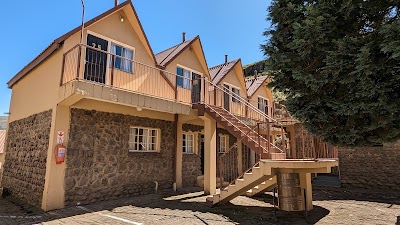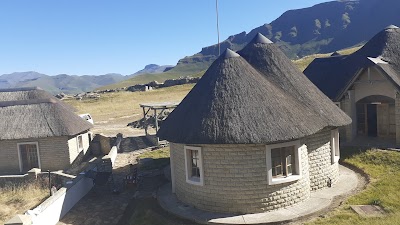Butha-Buthe Fort (Qhobosheaneng)
Overview
The Butha-Buthe Fort is a remarkable historical landmark located in the city of Butha-Buthe, Lesotho. This fort is not just a structure; it embodies the rich history and cultural significance of the Basotho people. Built in the early 19th century, it originally served as a stronghold against invaders, playing a vital role in the local defense strategy during a tumultuous period.
Constructed during the reign of King Moshoeshoe I, the founder of the Basotho nation, the fort's location was chosen for its strategic advantages. Perched on a plateau, it provided a commanding view of the surrounding landscape, making it challenging for enemies to approach undetected. The elevated position allowed defenders to keep watch for approaching threats, ensuring the safety of its inhabitants.
The fort's construction involved extensive use of local materials. Stone and mud were the primary components, resulting in a robust and enduring structure. Skilled laborers from nearby regions collaborated to create walls capable of withstanding both natural elements and human aggressors. This communal effort not only showcases the craftsmanship of the time but also reflects the unity among the Basotho people.
Inside the fort, the layout was meticulously planned to optimize defense. Lookout points were strategically placed to detect enemy movements from afar. Additionally, stockpiles of essential supplies were stored to ensure that the fort could endure prolonged sieges. Living quarters and areas for livestock were incorporated, establishing the fort as a self-sufficient refuge during times of conflict.
A remarkable feature of Butha-Buthe Fort is its clever use of natural rock formations. Builders skillfully integrated these rocks into the fort's walls and defensive structures, enhancing its fortifications while blending seamlessly with the natural landscape. This design innovation made it even more challenging for potential invaders to identify the man-made structures.
While it was initially a military fortification, Butha-Buthe Fort also played a significant role in the social and political cohesion of the region. It became a hub for community gatherings and decision-making, solidifying King Moshoeshoe’s leadership and helping to unify various clans under the Basotho nation.
Over the years, the fort witnessed numerous battles, notably the clash with the Batlokoa people, led by Chief Sekonyela in the early 1830s. Despite being outnumbered, the defenders utilized their strategic advantage to fend off the invaders, successfully maintaining control over their land.
With the arrival of European settlers, the fort faced new challenges and was eventually abandoned as a military stronghold due to evolving warfare technologies and tactics. Nevertheless, it remained a significant cultural and historical symbol for the Basotho people, representing resilience and unity.
In contemporary times, efforts have been made to preserve the ruins of Butha-Buthe Fort. It has transformed into a tourist attraction, drawing visitors eager to learn about the history and heritage of Lesotho. Guided tours are available, offering insights into the fort’s construction, its historical importance, and the life of King Moshoeshoe I.
Preservation activities have included stabilizing ancient stonework and creating pathways for visitors. Informative signs and exhibits narrate the fort’s story, its battles, and its people, ensuring that the legacy of Butha-Buthe Fort is appreciated by future generations.
In conclusion, Butha-Buthe Fort stands as a testament to the resilience and ingenuity of the Basotho people. It symbolizes a period of unity and strength in the face of adversity and remains an enduring part of Lesotho's rich cultural history, inviting all who visit to reflect on its significance.








